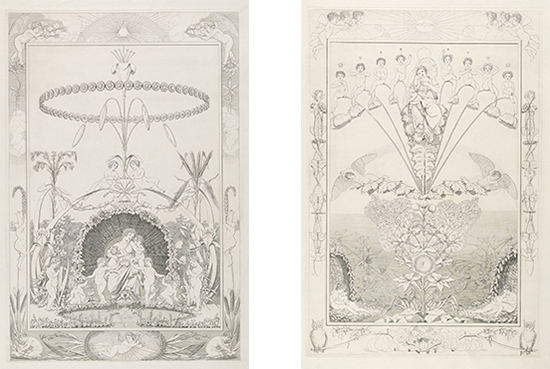Philipp Otto Runge's Times of Day
|
The Getty Research Institute has acquired one of the few surviving copies of a first-edition suite of four prints entitled Times of Day by Philipp Otto Runge (1777–1810), a leading painter and theorist of the German Romantic movement. The series of prints—Morning, Evening, Day, and Night—is universally recognized as a monument of German Romantic art.
|

|
|
Runge rejected the tradition of academic art in favor of a radical, highly personal vision that symbolically expressed the essential harmony of nature, humanity, and the divine. The idea behind the complex iconography of Times of Day is the arrival and departure of light during four stages of the day, while at the same time representing the organic process of conception, growth, decay, and death. The elegance and purity of these prints was praised by none other than the towering figure of 18th-century German literature, culture, and science, Johann Wolfgang von Goethe, who displayed a set of the Times of Day in his music room shortly after it was given to him by Runge. Speaking to a visitor about the suite in 1811, Goethe exclaimed, "Just look at it: it's enough to drive you crazy, beautiful, and mad at the same time."
|

|
|
From 1802 until his untimely death in 1810 at the age of 33, Runge worked obsessively on these images, carefully articulating every aspect of their compositions and frames. Early in the planning stages, he made four large outline drawings in preparation for the final images. The first, small edition of the four engravings was limited to 25 sets. Made by three skilled printmakers and published in Hamburg in 1805, the printed Times of Day reflects the gracefulness and delicate execution of Runge's preparatory drawings.
|
|
Though in 1807 a second, altered edition, perhaps as large as 250 sets, was published for commercial distribution, Runge's motivation for issuing this first edition was to share it with other artists and writers in order to disseminate his new ideas and announce his plans to create a series of large paintings based upon the designs. The painted series was largely incomplete at the time of his death; thus the prints are a crucial record of Runge's artistic intentions.
|
